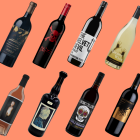Drinking a well-aged wine is an unparalleled experience for the senses – and that’s no recent discovery. The Ancient Greeks and Romans were well aware of the potential of aged wine, with archaeologists uncovering evidence of wines stored in sealed earthenware for many years in both civilisations. There’s even a passage in the Bible – Luke 5:39 – that notes the value of older wines compared to their younger counterparts.
But not all wines are made to be matured. In fact, most wines – more than 95% – are not meant age, and storing them in even the most pristine cellaring conditions will result only in a sealed bottle of vinegar. So what does makes for an age-worthy wine?
Structure
Determining whether or not a wine will last is not an exact science, but there are four traits oenophiles generally look for to determine aging potential.
- Acidity: Wine loses acidity over time, so those with higher acidity tend to last longer.
- Tannin: A wine with well-balanced tannins will ‘smooth out’ over time as they break down, so those with higher tannins tend to age better. A note of caution, though: if the wine is not well-balanced to begin with it will never improve over time.
- Alcohol: Alcohol’s role in aging is something of an enigma. In most cases, it’s the primary catalyst that causes a wine to break down, and yet it also acts as a stabiliser in higher amounts. As such, wine alcohol percentage below 13.5% ABV or above 15% (as is the case for fortified wines and some dry whites) have better aging potential.
- Sugar: Residual sugar is an oft-overlooked component because of the popularity of aging dry wines. However, the longest-lived wines tend to be sweet varieties, such as Sauternes and Riesling.
Producer
The technique, style and even geographical location of a winemaker can have a big impact on a wine’s aging potential. Before buying, look into the producer’s history – a healthy track record of solid winemaking and multiple successful vintages is usually a good indication that they know what they’re doing. Inexperienced winemakers with little understanding of oenology are not well-positioned to create long-lasting wines.
It’s also important to look at the vintage in particular. Wine that is produced in a cooler climate typically ages better than wine from a warmer region, but even if the wine comes from a cooler area, a particularly warm vintage can affect its aging potential. These so-called ‘hot vintages’ will taste phenomenal early on, but can quickly lose acidity due to the way the grapes have ripened.
Grape Variety
Red wines typically need longer to reach maturity than whites, although beyond this there are no hard and fast rules about which grapes will age the best. Much of it will depend on the wine’s structure, its producer and, of course, the way that it’s stored – you may well have a wine absolutely ripe for the aging but if it’s not stored correctly it will never reach its potential.
However, here’s a very over-simplified look at reds:
- Nebbiolo – around 20 years
- Aglianico – around 20 years
- Cabernet Sauvignon – 10-20 years
- Tempranillo – 10-20 years
- Sangiovese – 7-17 years
- Merlot – 7-17 years
- Syrah – 5-15 years
- Pinot Noir – around 10 years (although longer for Burgundies)
- Malbec – 10 years
- Zinfandel – 5 years
And a very simplified look at whites:
- White Rioja – 10-15 years
- Chardonnay – around 10 years (longer for Burgundies)
- Trebbiano – 8 years
- Semillon – 7 years (although longer for Bordeaux)
- Sauvignon Blanc – 4 years
- Viognier – 4 years
- Muscadet – 3 years
- Pinot Gris – 3 years
Sweet wines, however, have some of the longest runways to age of all. Hungarian Tokaji could reasonably be expected to age for up to 30 years, while Riesling and French Sauternes could age for between 15 and 25 years.
How it tastes now
Wines that are likely to do well in the cellar are usually described as ‘tight’ or ‘closed’ in their infancy, due to the amount of tannin and acidity in their structure. So as a rough rule of thumb, if a wine tastes perfect right now, that probably means it should be drunk right now.






